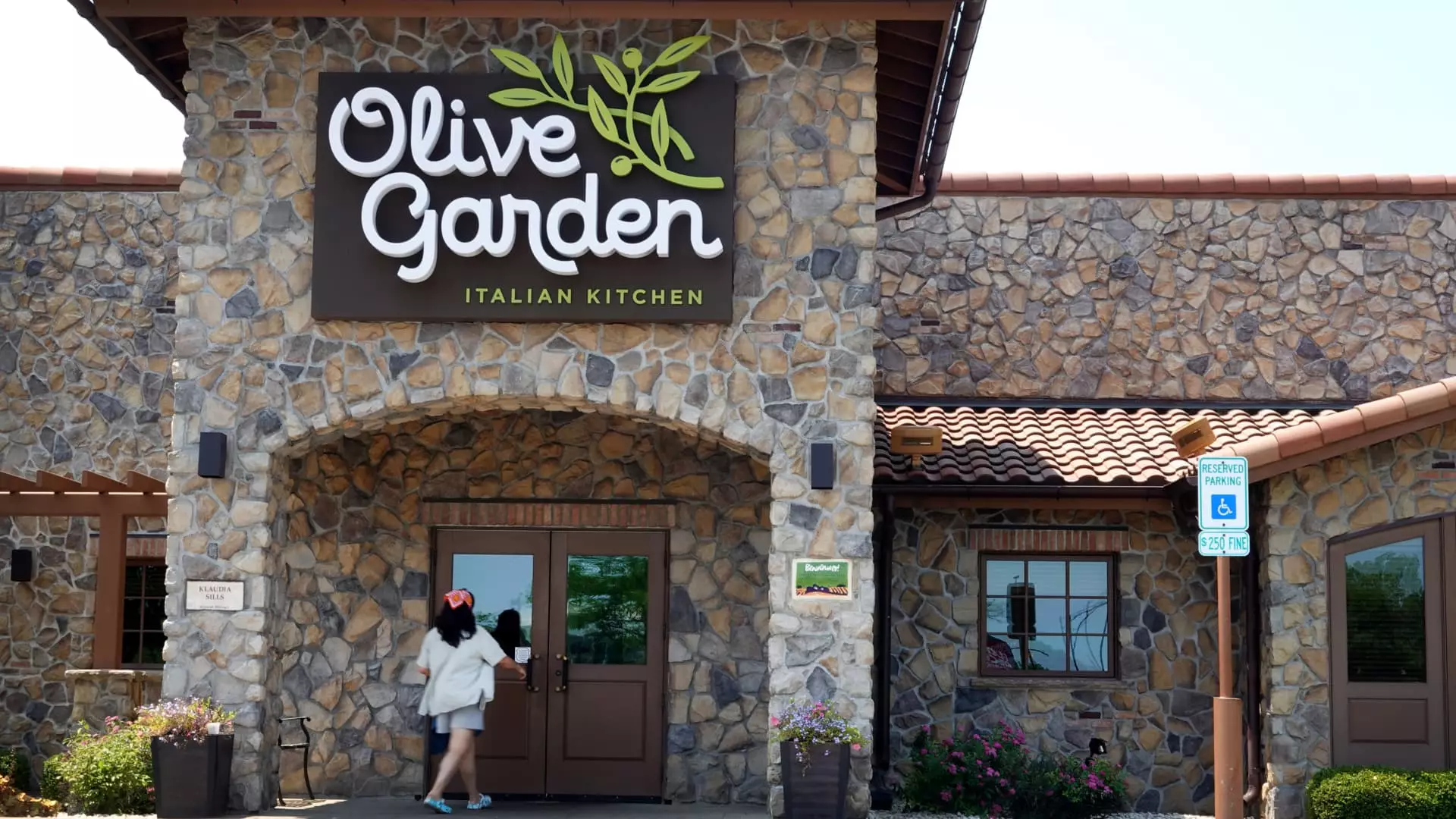Darden Restaurants recently released its fiscal second-quarter earnings, indicating a robust performance that aligned with analyst expectations. The company, renowned for its diverse portfolio of dining brands, including Olive Garden and LongHorn Steakhouse, reported adjusted earnings of $2.03 per share, slightly surpassing the $2.02 forecasted by analysts. Revenue for the quarter reached $2.89 billion—just shy of the expected $2.90 billion—but still demonstrated a commendable 6% year-over-year increase. This positive financial trajectory led to a 13% surge in Darden’s stock prices during morning trading, as investors reacted favorably to the overall results.
Net Income and Sales Growth
Darden’s net income amounted to $215.1 million for the quarter, translating to $1.82 per share, up marginally from $212.1 million or $1.76 per share in the same period last year. When accounting for costs associated with the recent acquisition of Chuy’s—a Tex-Mex restaurant chain—Darden still managed to achieve adjusted earnings of $2.03 per share, demonstrating financial resilience despite expansion expenses. Additionally, the company’s same-store sales growth, a key metric in the restaurant industry, increased by 2.4%, exceeding Wall Street’s estimate of 1.5%. This indicates a steady recovery in consumer spending, particularly among middle-income customers who frequent Darden’s establishments.
Consumer Spending Insights
Darden’s CEO, Rick Cardenas, commented on the shift in consumer behavior, noting that customers with household incomes between $50,000 and $100,000 appear to be dining out more often. However, patrons in higher income brackets have not increased their restaurant visits. This nuance suggests a complex economic landscape, where middle-income diners are looking for value in their dining experiences, while higher-income customers may be more discerning in their spending habits. Additionally, evidence from weather-related disruptions reveals that Darden’s restaurants were affected by Hurricanes Helene and Milton, although only one location has remained permanently closed, indicating the chain’s overall operational resilience.
LongHorn Steakhouse emerged as a star performer within Darden’s portfolio, reporting an impressive same-store sales growth of 7.5%. This exceedance of the anticipated 4.1% growth demonstrates the chain’s ability to capture consumer interest through quality offerings and competitive pricing. Conversely, Olive Garden, which significantly contributes to Darden’s revenue—accounting for over 40%—achieved a same-store sales increase of 2%, surpassing expectations of 1.4%. Recent promotional strategies, such as the reintroduction of the popular “Never Ending Pasta Bowl,” have encouraged customers to spend more, further solidifying Olive Garden’s position in the casual dining space.
In contrast, Darden’s fine dining segment, comprising brands like The Capital Grille and Ruth’s Chris Steak House, faced challenges, reporting a same-store sales decline of 5.8%. This decline was steeper than the anticipated 2.8% drop, illustrating consumer pushback against higher prices during uncertain economic periods. Factors such as the calendar shift of Thanksgiving affecting sales this season, alongside adverse weather conditions, contributed to this negative trend. However, when excluding these impacts, the fine dining sector’s performance showed signs of improvement, with a reduced decline of 3.8% compared to previous quarters.
Darden is not resting on its laurels, as evidenced by the addition of 39 net new locations—along with the integration of 103 Chuy’s restaurants—following a $605 million acquisition completed in October. This expansion signifies Darden’s commitment to growth, as they also updated their fiscal 2025 outlook to project total sales of $12.1 billion, raising previous estimates. The company reiterated its expected net earnings per share from continuing operations at $9.40 to $9.60, maintaining a balance of optimism and prudence as it navigates a shifting economic landscape.
Darden Restaurants has showcased a strategic blend of expansion and operational stability, effectively responding to consumer trends while managing challenges across different market segments. The positive quarterly results suggest that the company is well-positioned to continue its growth trajectory amidst evolving dining preferences and economic conditions.

